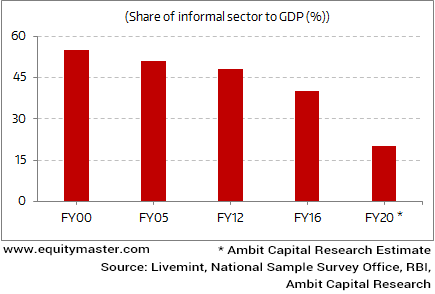India's Third Giant Leap
This Could be One of the Biggest Opportunities for Investors
- Home
- Todays Market
- Indian Stock Market News April 7, 2017
Sensex Trades Marginally Lower; Healthcare Stocks Witness Selling Fri, 7 Apr 11:30 am
After opening the day on a negative note, the Indian share markets witnessed choppy trades and are presently trading marginally lower. Sectoral indices are trading on a mixed note with stocks in the healthcare sector and banking sector witnessing maximum selling pressure. Telecom stocks are trading in the green.
The BSE Sensex is trading down 95 points (down 0.3%) and the NSE Nifty is trading down 21 points (down 0.2%). The BSE Mid Cap index is trading up by 0.3%, while the BSE Small Cap index is trading up by 0.4%.
The rupee is trading at 64.38 to the US$. The rupee is scaling new highs everyday of late and is hovering near its 20-month high.
The above appreciation in the rupee comes as a welcome breather for importers in India. It helps importers to buy goods and services at a cheaper rate that earlier. This is vital for a developing economy that relies heavily on imports. So this is a good indication for the Indian economy as higher imports normally mean increased economic activity.
However, on the other hand, the rise in rupee has spelled trouble for exporters. The exporters are at a disadvantage owing to the currency appreciation as this renders their produce expensive in the international markets as compared to other competing nations whose currencies haven't appreciated on a similar scale. This tends to take away a part of the advantage from Indian companies, which they enjoy due to their cost competitiveness.
While there are advantages as well as disadvantages of a rising rupee, one needs to understand whether the rise in the rupee is sustainable to derive any reasonable conclusion at this stage.
For one, the weakness of the US dollar is largely due to the relative unattractiveness of US assets. This is in part due to a very low interest rate regime prevalent in the US economy. Already there are indications that this low interest rate regime may not be sustainable for long. This means that US interest rates may go up and this may likely strengthen the US dollar.
In a major positive development, India just got closer towards a possible July 1st rollout of the Goods and Services Tax (GST). This comes as the Parliament gave its nod to four related legislations that detail the provision of GST tax regime.
Implementation of the GST promises to transform India into a single common market and there are many sectors which stand to gain immensely from this transition.
Further, the Goods and Service Tax (GST) is likely to bring about a structural change in the Indian economy. The implementation of the same is bound to bring more companies under the new tax regime, thus providing a level playing field to organized.
Shrinking share of India's informal economy
This could be a positive for stock market participants, as the above transition will lead to a value migration from unorganised players to organized players. And companies with solid fundamentals and a competitive moat will capture most of this value.
Our Hidden Treasure team is already on the lookout for opportunities in such companies.
The team consciously make it a point to visit factories and meet management of companies in niche business, at obscure locations. Not all of them make it to our recommendations... But the few that do are a potential goldmine of sorts in the post notebandi era.
Meanwhile, market participants are also taking cues from yesterday's RBI Monetary Policy. In its Monetary Policy Committee (MPC) meeting, the RBI held repo rates steady at 6.25%.
Further, it hiked the reverse repo rate from 5.75% to 6%.
This decision on policy rates comes on the back of RBI's objective of reining (CPI) inflation of 4% (plus or minus 2%) even while supporting growth. For FY18, RBI projects inflation at an average of 4.5% to 5%.
The RBI now has most of its focus on liquidity management. It aims to suck the excess liquidity out of the banking system. This is because credit growth is hovering at its historic lows; and banks are flush with cash post notebandi.
One of the measures promised by the RBI was to have a more effective liquidity management tool in a new instrument called standing deposit facility (SDF).
For information on how to pick stocks that have the potential to deliver big returns, download our special report now!
Read the latest Market Commentary



Equitymaster requests your view! Post a comment on "Sensex Trades Marginally Lower; Healthcare Stocks Witness Selling". Click here!
Comments are moderated by Equitymaster, in accordance with the Terms of Use, and may not appear
on this article until they have been reviewed and deemed appropriate for posting.
In the meantime, you may want to share this article with your friends!